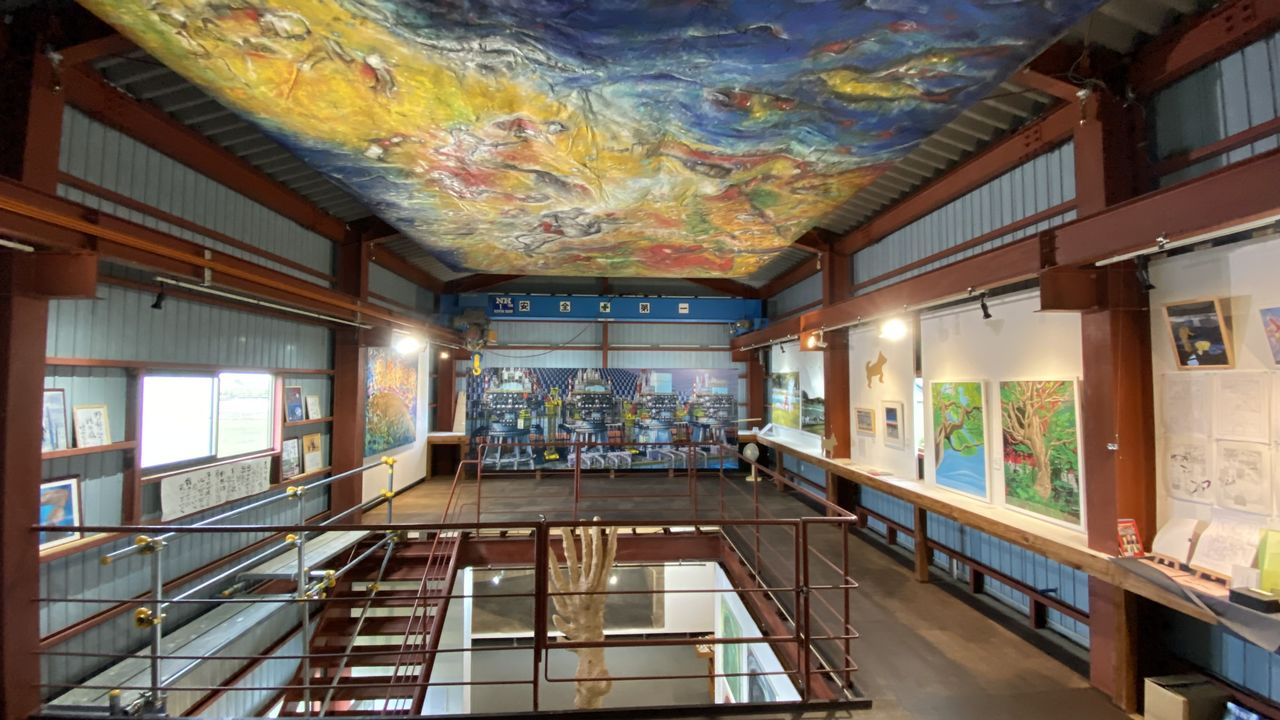
Fukushima Photographer Nakasuji Jun on the Lessons of the Nuclear Disaster
Guideto Japan
Art Travel- English
- 日本語
- 简体字
- 繁體字
- Français
- Español
- العربية
- Русский
Two Museums
The Hamadōri area, coastal Fukushima Prefecture, was devastated by the Great East Japan Earthquake and tsunami, and was also the scene of the meltdown at the Fukushima Daiichi Nuclear Power Station (which straddles the municipalities of Ōkuma and Futaba). Hamadōri is home to two museums that aim to pass on the message about the horrors of the nuclear disaster to future generations. One is the Great East Japan Earthquake and Nuclear Disaster Memorial Museum that opened in Futaba on September 20, 2020. The other is Oretachi no Denshōkan, “Our Museum,” which opened on July 12, 2023, in the Odaka district of Minamisōma.
The director of Our Museum is Nakasuji Jun, a photographer who documented the aftermath of the Chernobyl and Fukushima nuclear disasters. But just why did Nakasuji make a habit of photographing nuclear power plants, and why did he lead the project to establish Our Museum? I asked him about his career and the message he wanted to convey with this new facility.
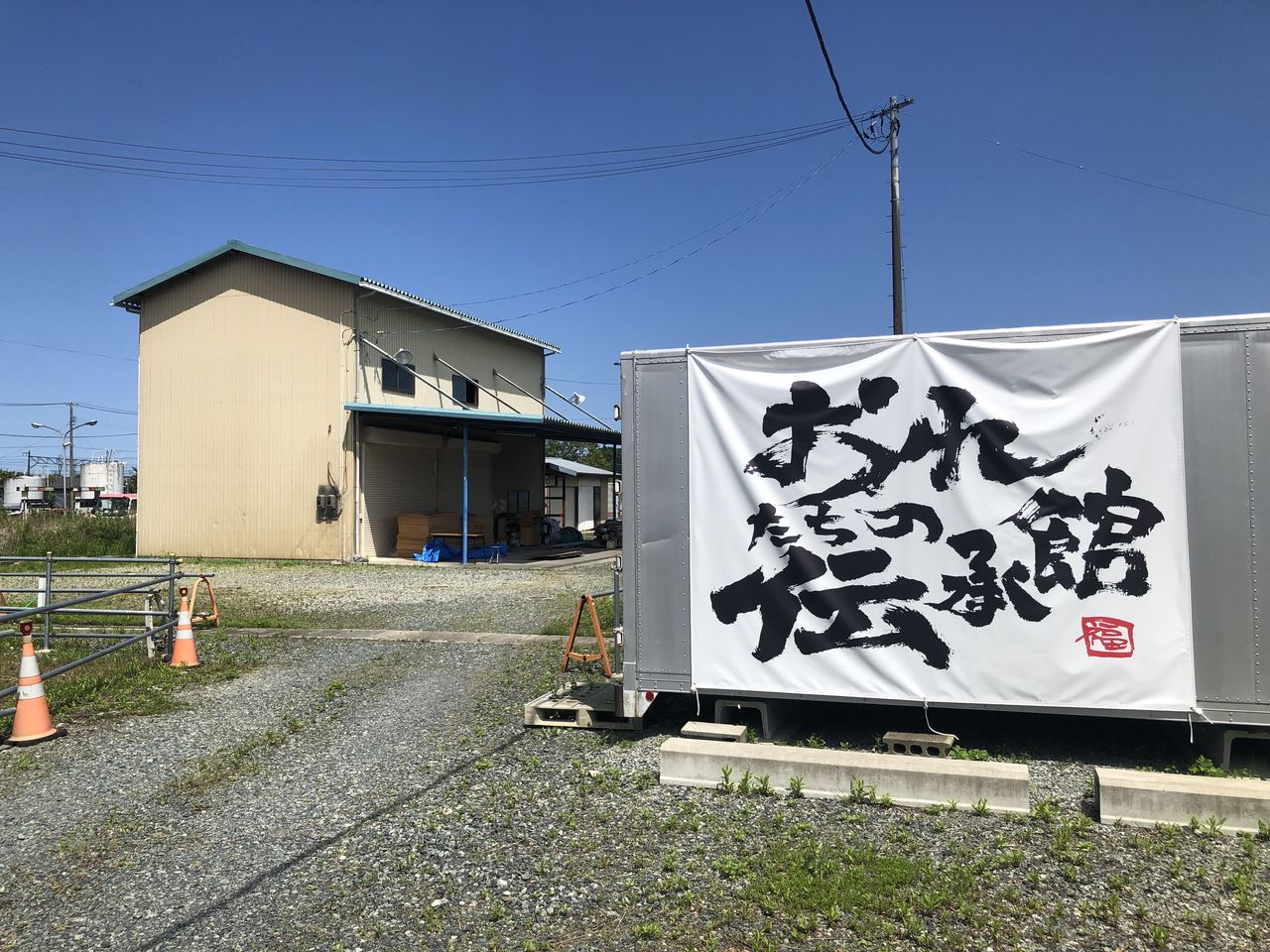
Our Museum is housed in a converted warehouse near JR Odaka Station. (© Nakasuji Jun)
After graduating from the Tokyo University of Foreign Studies, Nakasuji had a stint with a publisher before establishing himself as a freelance photographer. He first started photographing the Chernobyl nuclear plant in Ukraine in 2007, but I was surprised to hear what made him decide to do so.
“I did a series on abandoned buildings for a magazine, and enjoyed the experience so much that I ended up going around the whole country taking photographs of these haikyo sites. I then decided that I wanted to photograph buildings overseas as well, which is when I had the idea of visiting Chernobyl,” says Nakasuji.
Twenty-one years after the 1986 disaster, Chernobyl remained a scene of devastation with no evidence of any kind of revival. Nakasuji was overwhelmed by the sheer scale of the devastation—these were more than just abandoned buildings.
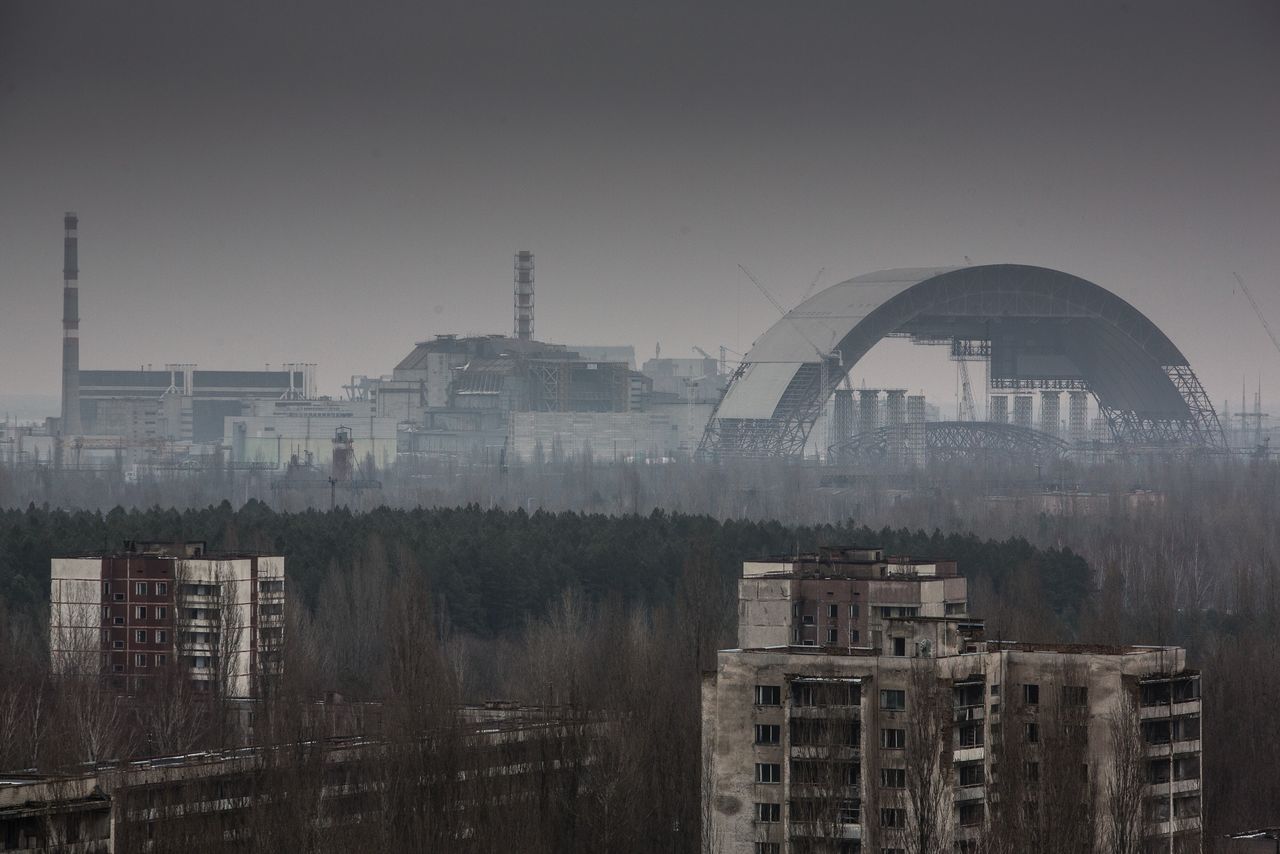
From Chernobyl: A Time and a Season. (© Nakasuji Jun)
“Just a few kilometers from the reactor building, now covered by a giant concrete sarcophagus, was a community called Pripyat. Once home to 50,000 plant workers and family members, Pripyat became a ghost town overnight when its residents evacuated after the accident. In Pripyat, life stood still,” explains Nakasuji.
Pripyat was etched indelibly into his mind. The way the disaster put a sudden halt to people’s activities created a relentless sense of extinction.
“The loss of the nuclear power plant caused all the activities people had been conducting to be frozen in time. I witnessed this frightening reality for myself. At the time of the accident, Ukraine was a soviet republic. Within the 30-kilometer exclusion zone, Soviet-era life has therefore been preserved. You see murals bearing Communist propaganda and statues of Lenin everywhere. It was my fascination with the mystery of the Soviet Union that inspired me take photographs that created links between that sense of mystery and the abandoned buildings,” says Nakasuji.
While many photographs of Chernobyl circulated in the aftermath of the disaster, few photos were taken of the site as it stood many years later. Nakasuji’s editor shuddered upon seeing his photos.
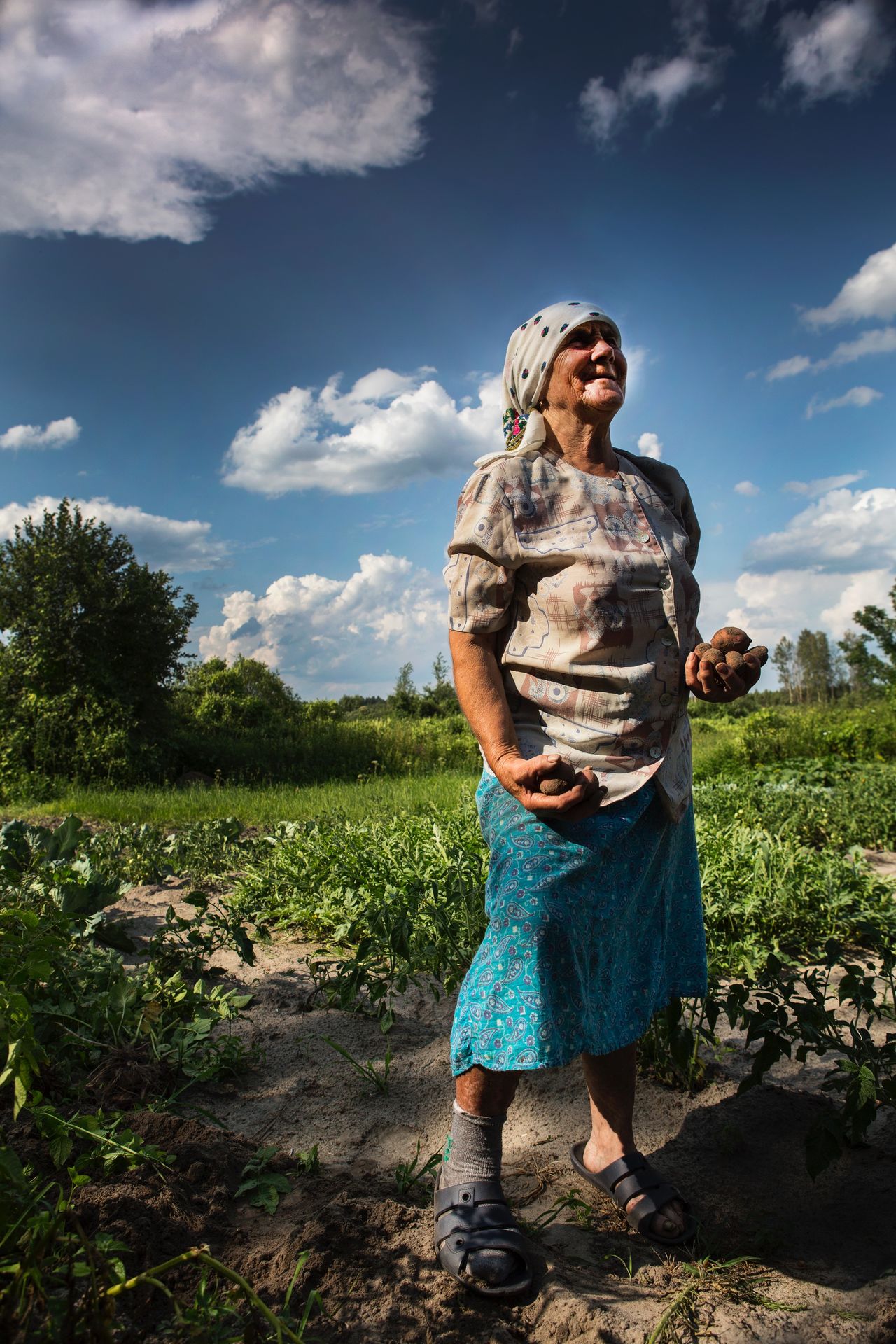
From Chernobyl: A Time and a Season. (© Nakasuji Jun)
Nakasuji would return to Chernobyl every year. Not only was the scale too vast to capture in one visit, but he wanted to record the area as it changed over time. He continued photographing the site until 2014, and published his photos in a collection titled Chernobyl: A Time and a Season.
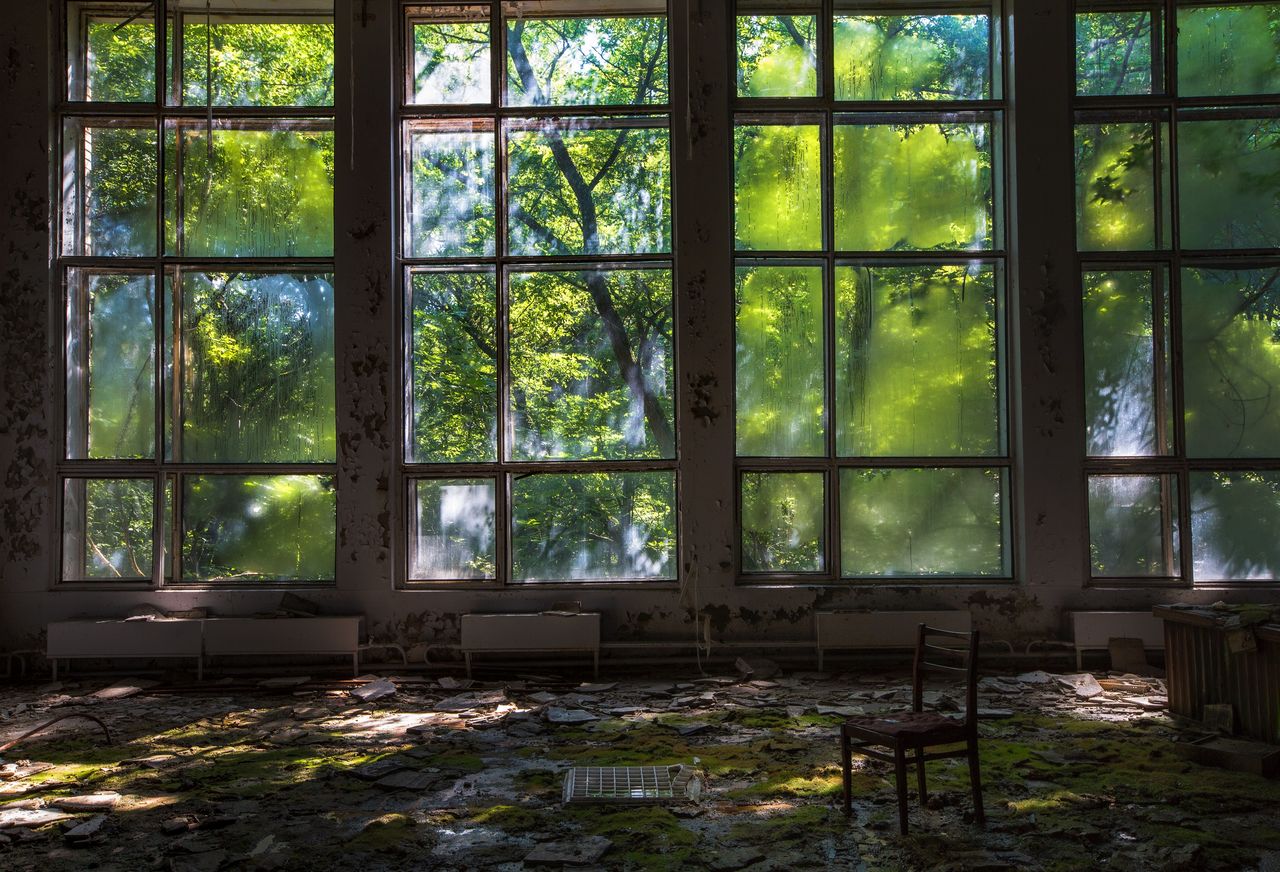
From Chernobyl: A Time and a Season. (© Nakasuji Jun)
The Role of the Photographer
In the spring of 2011, four years after Nakasuji began documenting Chernobyl, Japan was devastated by the Great East Japan Earthquake. While the disaster sparked a resurgence in the movement to end nuclear power, Nakasuji, already all too aware of the horror of nuclear disasters, did not attempt to become actively involved.
“Social activism causes people to align more strongly with ideologies, and this can cause the polarization of the for- and anti- camps, making it impossible to have a proper debate. Those for and against nuclear power, each representing ten percent of the population, were antagonistic to each other, while the remaining eighty percent of the population was apathetic. The aftermath of Chernobyl illustrates strikingly the horror of nuclear accidents, and as a photographer, I decided to devote myself to the job of documenting and conveying the message the site is trying to tell us,” says Nakasuji.
A year after the accident, the government of Namie, a town neighboring Sōma that had been completely evacuated, gave Nakasuji permission to take photographs. He travelled from his home in Hachiōji, Tokyo, to Fukushima once a month. While he thought the experience of Chernobyl had already made him keenly aware of the horror of nuclear accidents, in Fukushima he frequently encountered scenes that left him lost for words.
“The scenes at a shopping center in Tomioka, just south of Ōkuma, that I visited in 2015 were horrific. Wild animals had foraged through the grocery items, leaving them strewn about, and there were corpses of dead animals everywhere, infested with maggots and surrounded by swarms of flies. There were also many webs, as the flies attracted spiders. The moment I entered the shopping center, my sense of smell was overwhelmed,” he says.
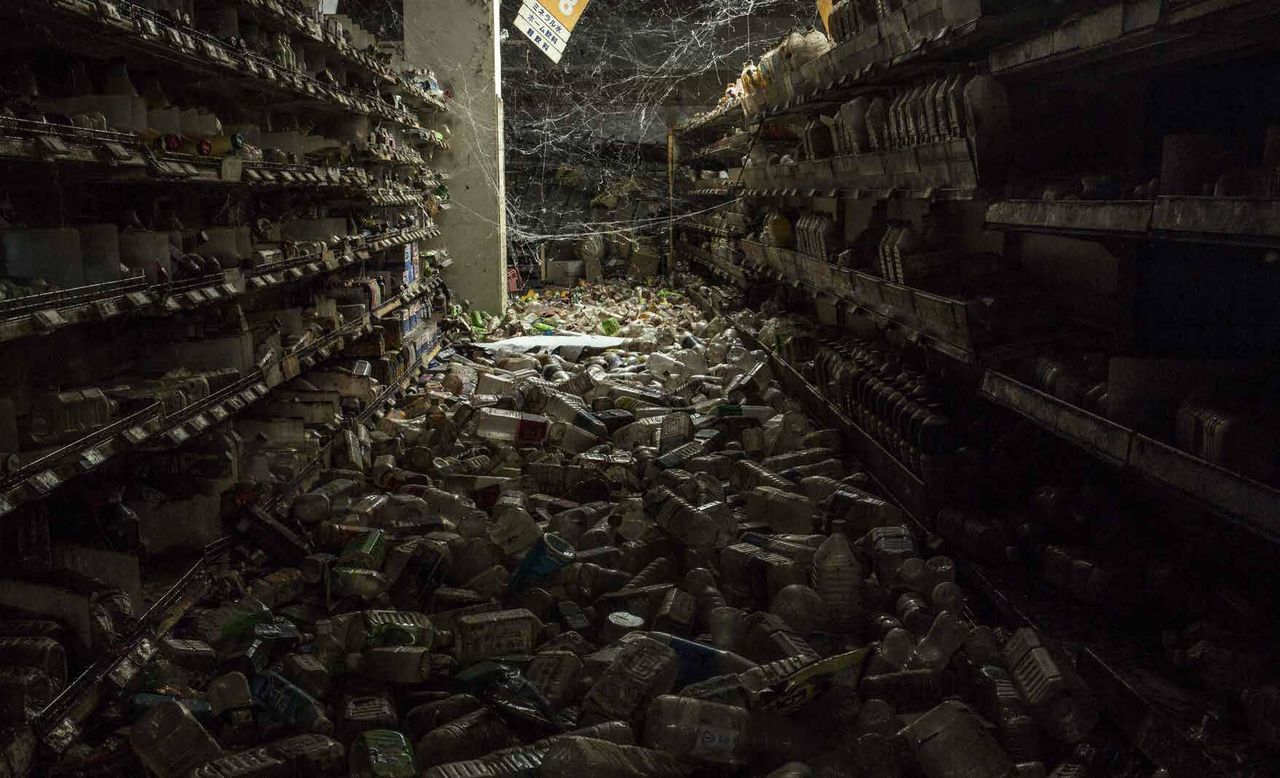
The interior of a shopping center in Tomioka featured in Kasabuta: Fukushima the Silent Views. (© Nakasuji Jun)
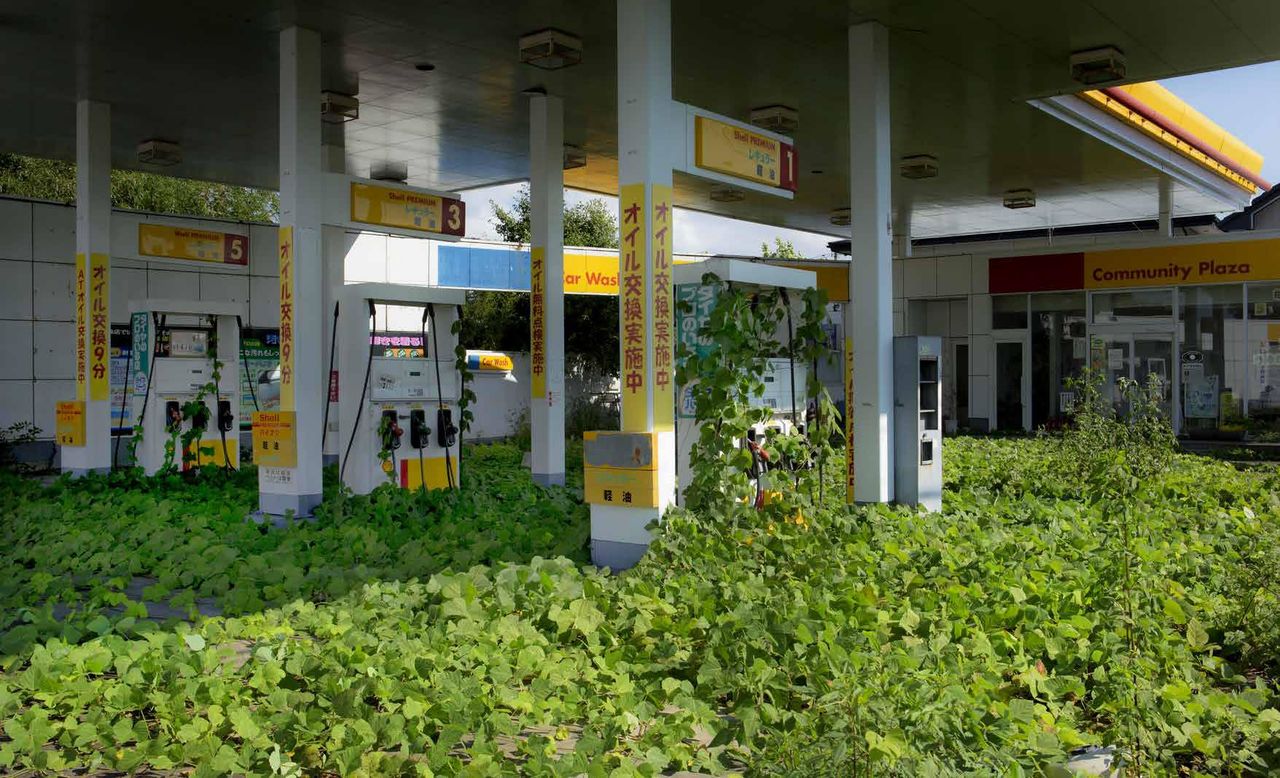
A gas station in Futaba from Kasabuta: Fukushima the Silent Views. (© Nakasuji Jun)
Nakasuji says he applied the same stance to photography in Fukushima as he had in Chernobyl.
“In both Chernobyl and Fukushima, news photographers tended to create an eerie vibe by overexposing the sky. I know they probably did this to convey the horror of the nuclear disasters, but I found such photographs to be too political and felt that I was being forced to come out either for or against nuclear energy. I would rather focus on the beauty that resides in abandoned landscapes. Today, the skies of Hamadōri are wide open and graced by slowly moving, fluffy clouds. However, behind this seemingly peaceful scene is a serious issue. I believe that contradiction piques the interest and imagination of many people,” says Nakasuji.

A fox outside Futaba Station, from Konsento no mukōgawa (On the Other Side of the Power Outlet). (© Nakasuji Jun)
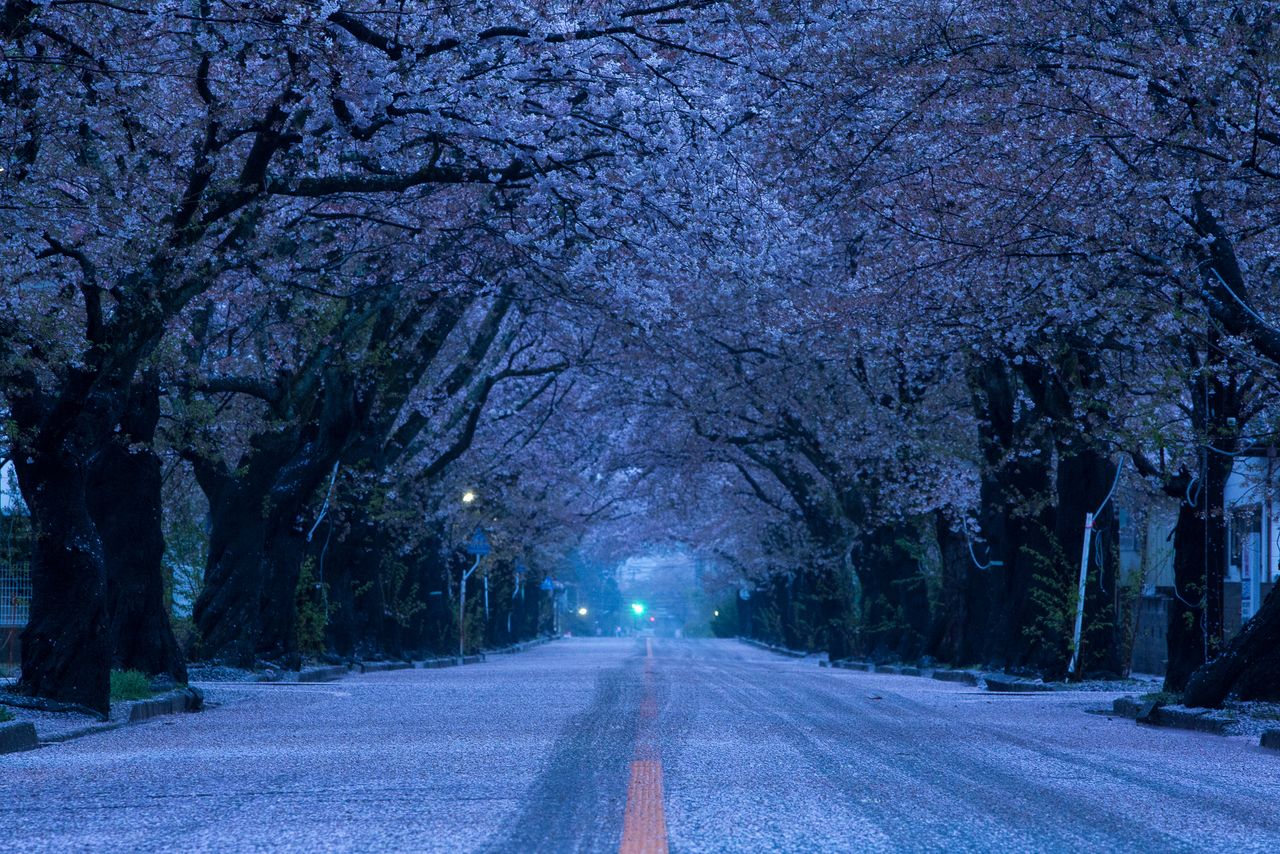
Cherry blossoms in Tomioka at night from Konsento no mukōgawa. (© Nakasuji Jun)
Keeping the Memory Alive
It was after visiting the Great East Japan Earthquake and Nuclear Disaster Memorial Museum, which was built at a total cost of ¥5.3 billion, that Nakasuji had the idea to create another museum by hand with the help of local residents and volunteers.
“I visited the museum straight after it opened, but it was low on content, and the only message I got was that they wanted to attract new industries,” recalls Nakasuji.
He felt that despite the fact that the museum’s name contained the word denshō (meaning to hand down knowledge), the organizers had failed to genuinely consider the lessons of the nuclear disaster. He said he thought, “I can’t stand for that,” and decided to launch the project to establish Our Museum.
“Ukraine has a program, currently suspended due to the war, in which artists create paintings based on the recollections of those who experienced the nuclear disaster. We had nothing like that in Japan, and I worried that the memory of the accident would fade and the disaster would be forgotten. Art is sometimes able to gently prompt us to consider issues. Since 2017, I’ve been collaborating with painters, performers and musicians to put on a series of joint shows, the Moyai Exhibition, that convey the reality of the disaster using a variety of media. I decided I wanted to exhibit these works permanently at the site of the disaster,” says Nakasuji.
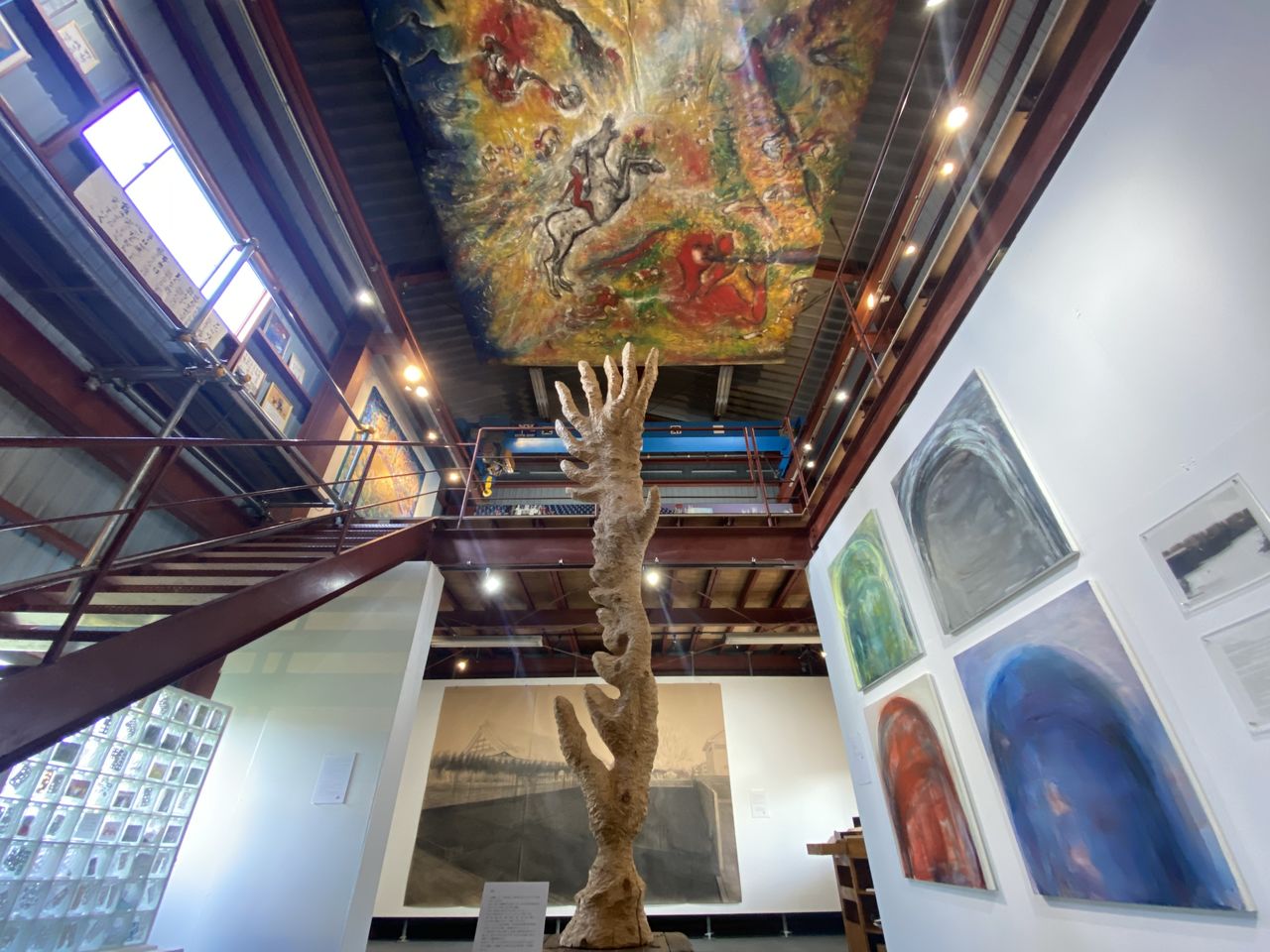
Our Museum houses 50 paintings, sculptures, photographs, and other artworks. (© Nakasuji Jun)
The museum is located in Odaka, an area in the city of Minamisōma where the evacuation order was lifted in 2016. In Odaka, many residents are still deciding how they want to live their postdisaster lives. Nakasuji hopes that having the small museum in the area will make a difference.
“I want this to be a lively place that locals feel free to visit. It’s on a route used by local schoolchildren, so I hope children with an interest in art will visit. I also want to hold workshops aimed at children, and otherwise build a good relationship with the area,” he says.
A photographer who still believes in the possibilities of art, Nakasuji smiles as he concludes with the following statement.
“I want visitors to Hamadōri to see both museums. They might feel confused when presented with two different perspectives on the accident, but if that confusion can serve as a catalyst to make them consider the nuclear disaster and Fukushima in more depth, Our Museum will have been worthwhile.”
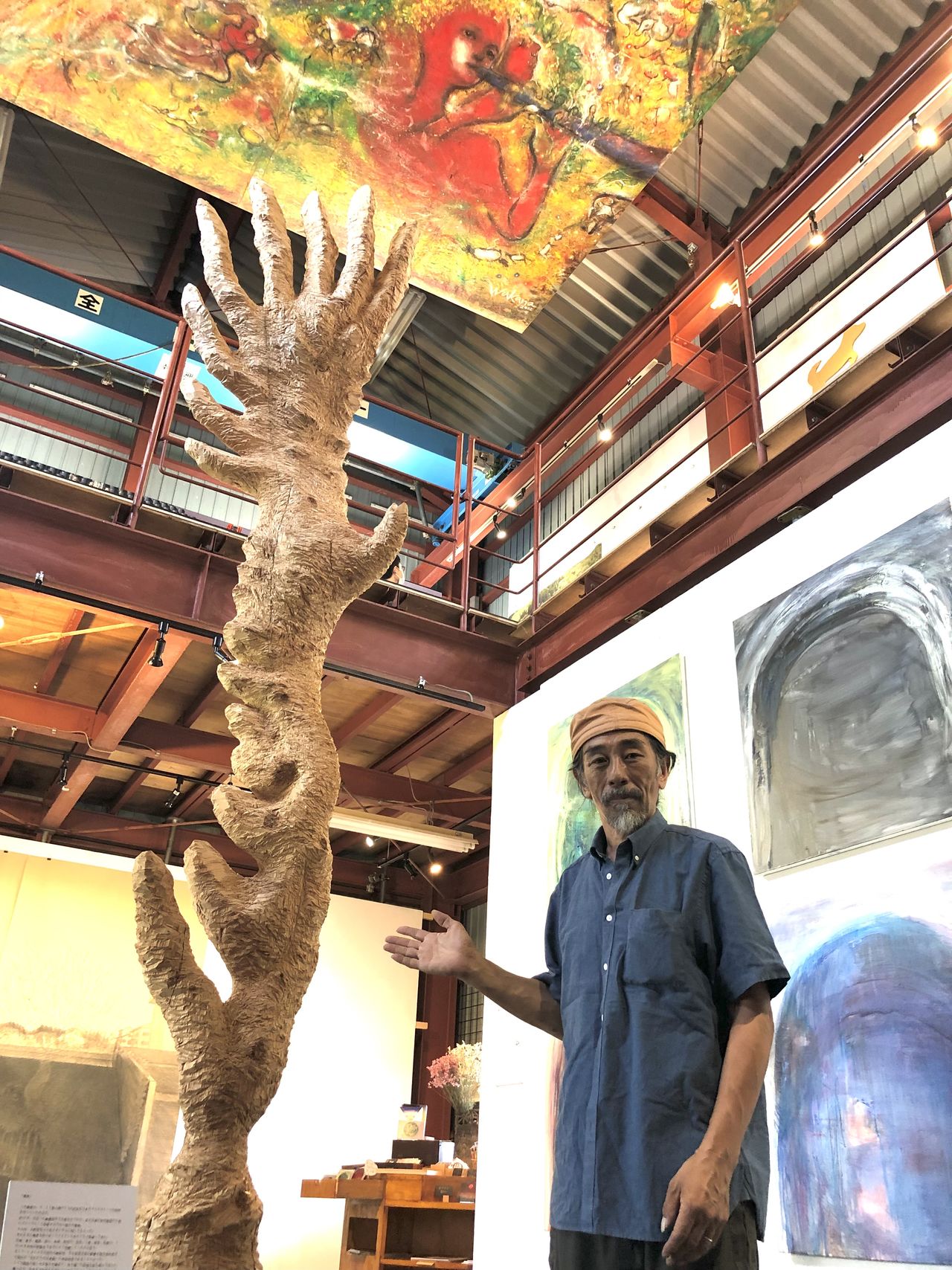
Nakasuji Jun is the director of Our Museum, which is operated by the participating artists. (Courtesy of Nakasuji Jun)
Oretachi no Denshōkan (Our Museum)
- Address: 2-23 Minami-machi, Odaka-ku, Minamisōma, Fukushima
- Opening dates: Through November 26, 2023: open Friday to Sunday and public holidays. After November 26: undetermined. See the museum’s Facebook page for opening dates, events, and enquiries.
- Hours: 11:00 am to 5:30 pm
- Admission free.
- Access: the museum is 7 minutes’ walk from Odaka Station on the JR Jōban Line.
(Originally published in Japanese. Banner photo: Despite its simplicity, the upstairs part of Our Museum allows visitors to feel the messages of the artists. The striking giant painting on the ceiling is by Yamauchi Wakana. © Nakasuji Jun.)